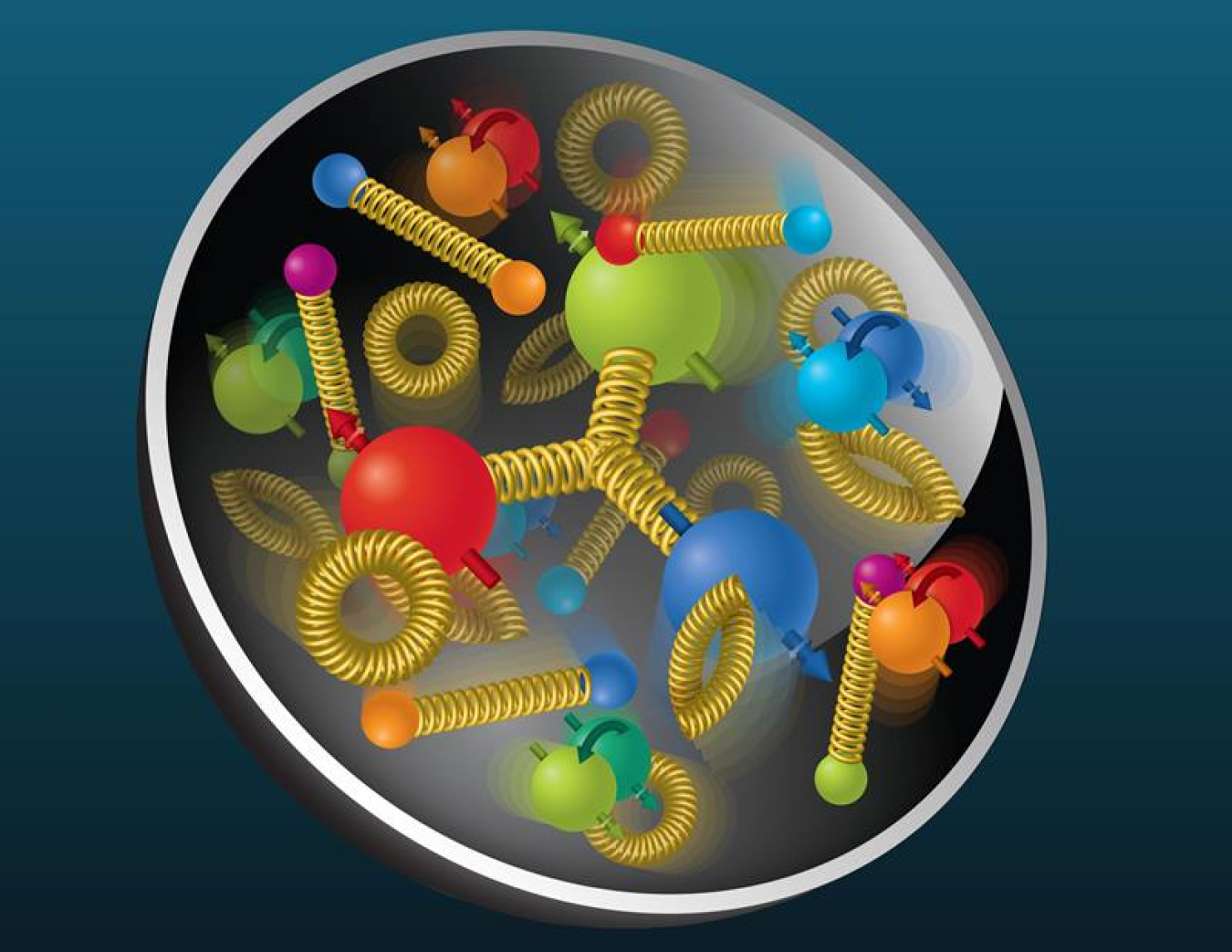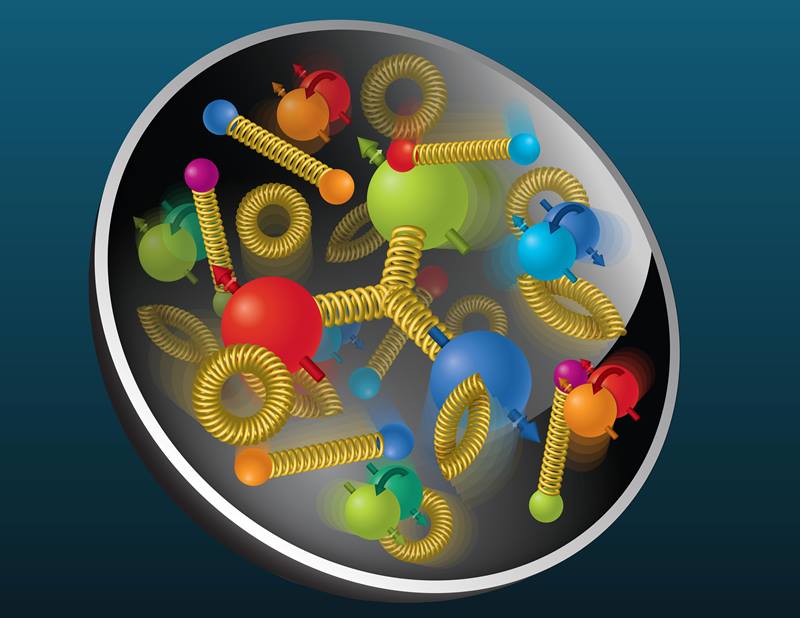
The Science
Theorists have proposed a novel method to experimentally probe the motion of gluons, the particles that hold quarks together inside protons. Theorists made predictions about how this internal motion will affect the scattering angle between a proton and an electron emerging from certain collisions at the future Electron-Ion Collider (EIC). Scientists will test these predictions by comparing them with measurements in different kinds of EIC collisions. Their goal is to measure the gluons’ orbital angular momentum—the rotation of gluons inside the proton around the proton’s overall “spin” axis. This measurement will help scientists determine how much this motion contributes to the proton’s spin.
The Impact
Spin plays an important role in binding the protons and neutrons of atomic nuclei, which account for 99 percent of the mass of visible matter in the universe. Scientists once thought spin came from the quarks that make up these particles. But experiments have shown that quark spins—and even gluon spins—can’t account for the total proton spin, resulting in a mystery. Measurements of how the orbital motion of quarks and gluons within a proton contribute to its spin have so far been inaccessible. This theoretical approach, guiding new measurements that will be possible at the EIC, could help solve the spin mystery.
Summary
The spin, or intrinsic angular momentum of subatomic particles, dictates how particles propagate, interact, and form bound states. How proton spin arises from its internal building blocks—quarks and gluons—is still a mystery. Experimental measurements of the individual contributions of quark and gluon spin don’t add up to the proton’s total spin. The orbital motion of quarks and gluons within the proton may account for the rest. This quantity has been very difficult to measure, but theorists have now proposed a way: measuring jets of particles and scattering angles in collisions of polarized (spin aligned) electrons and protons at the future EIC at Brookhaven National Laboratory, where only the jets emerge but the electron and proton remain intact. The probability of these electron-proton scattering interactions and the distribution of the angle between the scattered proton and electron depend on the spin alignments in the colliding particles and how much the gluons are rotating around the proton’s spin axis. By comparing the scattering probabilities and angular distribution in two different collision systems—where the proton and electron have their spin axes pointing in the same direction and where proton and electron spins point in opposite directions—scientists can learn about the orbital angular motion of gluons within the proton.
Contact
Yoshitaka Hatta
Brookhaven National Laboratory, Nuclear Theory Group
[email protected]
Funding
This work was supported by the Department of Energy Office of Science, Office of Nuclear Physics and Office of Advanced Scientific Computing Research, and by Laboratory Directed Research and Development funds from Brookhaven Science Associates, the contractor operating Brookhaven National Laboratory.
Publications
Bhattacharya, S., Boussarie, R., and Hatta, Y., Signature of the Gluon Orbital Angular Momentum. Physical Review Letters 128, 182002 (2022). [DOI: 10.1103/PhysRevLett.128.182002]
Scraped from https://www.sourcearu.com




